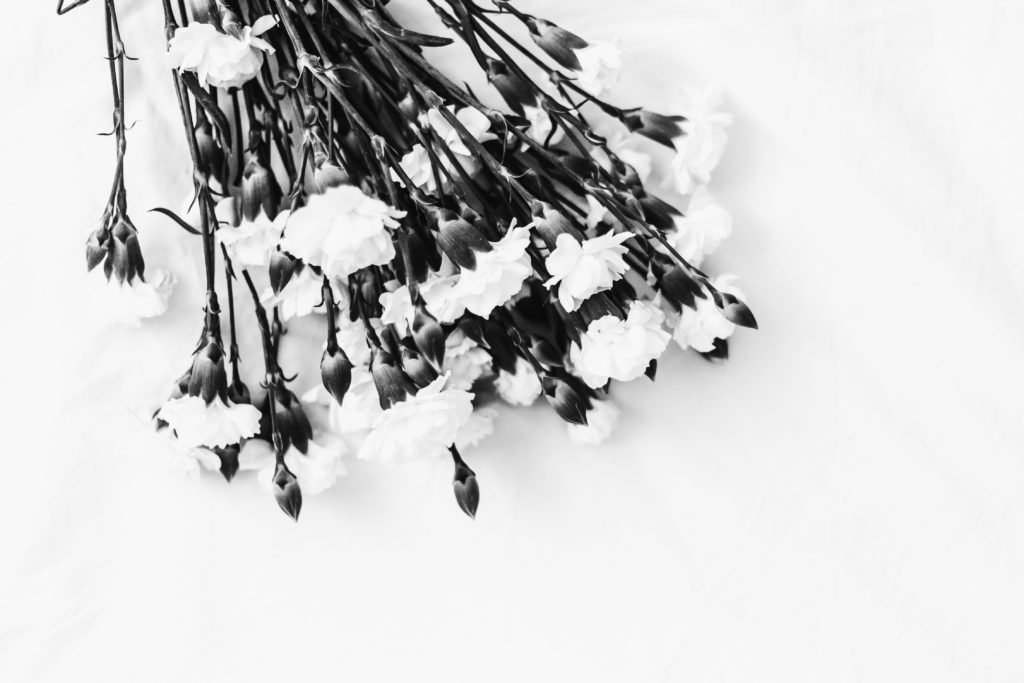
How to Write About a Dead Woman
“As a rule, think plain, unadorned, gravitas. No cleavage, thigh-high boots, or microminis. No animal prints and certainly no cowboy fringe.”
— Nina Garcia’s Look Book: What to Wear for Every Occasion, “What to Wear to a Funeral”
Between January 1, 2016 and mid-February 2018, five people I loved died: my best friend, two aunts, my grandmother, and my father. I started writing “How to Keep a Dead Woman Alive” shortly after the last two deaths, when I was unable to stop myself from dreaming about dead women. It was always the women. Women watching me while I slept, women waiting for me to catch up.
I never questioned the dreams or what was happening on the page. Writing about dead women seemed to be the natural result of not taking off work, not talking about my grief, and not stopping the day-to-day “grind” of grading essays, folding laundry, and hosting birthday parties for a house full of five-year olds.
“How to Keep a Dead Woman Alive” was/is part of a longer work-in-progress. The individual sections, though, were born from the blend of influences that seeped into my brain during each of those mind-numbing, grief-filled days.
In no particular order: Sylvia Plath, Selena, Carmen Maria Machado’s Her Body and Other Parties, Peaches ‘N Cream Barbie, Lincoln in the Bardo, what to wear to a funeral, how long it takes to grieve, Ouija boards, Bloody Mary, Twin Peaks, Linkin Park, George Michael, Amy Winehouse, The Cranberries, cremation, novel after novel after TV show after movie with a dead woman in the middle of the plot. The question of what happens to your best stories and your worst secrets if you’re the only one left alive to remember?
In his essay, “On Becoming an American Writer,” Alexander Chee says, “Speak to your dead. Write for your dead. Tell them a story. What are you doing with this life? Let them hold you accountable.”
Is that what I was trying to do as I wrote in the aftermath of my grief? Did I intend to speak to my dead? On some level, yes. Each time I dream about my friend, always her more than the others, I wake up wondering what she wants me to do now. What stories does she want me to write? What secrets am I allowed to share?
I wrote “How to Keep a Dead Woman Alive” with her in mind, her at age 35 and age 28 and age 22 and age 12. I saw her passing me a note in 8thgrade English and escorting me to junior prom and holding back my hair when we lived together years later. I saw her holding my son. I saw us shopping and sharing and stealing each other’s clothes. How intimate it all seems now, in retrospect, that I don’t have anyone who wants to borrow my favorite dress.
The dress, I think, was always part of the story, even before I started writing. As I packed my funeral dress for my friend’s memorial service, I might have thought about the perfect symbolism of a black dress and how I would one day write about my loss. I had a feeling more funerals were coming (though I didn’t know how many or how quickly), and if I had thought about writing through my grief, I would have also known how central a dress would be to that narrative.
Otherwise, I don’t remember writing a single word.
One of the benefits of writing at 5 a.m. is that no one cares what I’m wearing. Inside-out T-shirts tops and ratty robes are my uniform. It doesn’t matter if I’m blurry, stumbling, and unable to form complete thoughts yet. There’s coffee, and a cat to keep me company. There’s a (hopefully) charged laptop. The sky is just the right kind of dark.
This is how I write, with my subconscious still buzzing from half-baked dreams, and a complete lack of censorship. The internal editor is still asleep and the lack of perfection, the full-on embrace of imperfection, becomes the fuel for my creative process. A quiet house at 5 a.m. is pure luxury. Better than Burberry trench coats and Missoni knits and Frye harness boots, and whatever else Nina Garcia says I am supposed to own and enjoy.
After I wrote “How to Keep a Dead Woman Alive,” my Twitter friend, Steve Bargdill, told me about keening. Keening is a death wail, a public lament that has now grown out of fashion, giving women a voice for their grief. Sometimes professional mourners were hired to grieve publically at funerals. I am simplifying, of course, but the blend of beauty and tragedy struck a nerve. Yes, I thought. That is what it feels like to ache and not have the words, or to not need the words, to express it.
This is not to suggest that writing “How to Keep a Dead Woman Alive” was a healing experience. Not at all. I like how T Kira Madden addresses the issue of writing and healing in her essay “Against Catharsis: Writing is Not Therapy.” She writes, “But to render the art, to render the experience, does not, in my practice, involve ‘bleeding into the typewriter.’ It does not entail a writer spilling or spewing the memory onto a blank page, nailing it down, healing.” I don’t disagree.
Lately, my writing and my mourning are mashed together so brutally, I couldn’t ever call the creative process therapeutic. Instead, it feels like I am crafting a eulogy that no one has asked me to write. Over and over, it feels like standing in front of my family and friends, pretending like I have all the right words instead of one long, imperfect wail.